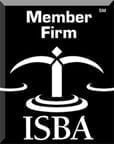FINRA Dispute Resolution
Disputes between securities customers and brokers or firms may be arbitrated before the Financial Industry Regulatory Authority (“FINRA”), under the Code of Arbitration Procedure for Customer Disputes (the “Customer Code”).
FINRA is a not-for-profit, nongovernmental organization. It was created in 2007 to consolidate the member regulation, enforcement, and arbitration operations of the National Association of Securities Dealers (“NASD”) and the New York Stock Exchange (“NYSE”).
The rules governing FINRA, including the rules for FINRA arbitration, are contained in the FINRA Rules, which apply to:
- All brokers and dealers who are registered with FINRA (the “Members”)
- Any individual in the investment banking or securities business who is directly or indirectly controlling or controlled by a Member (the “Associated Person”)
FINRA’s Office of Dispute Resolution is the arbitration and mediation arm of FINRA, operating the largest securities dispute resolution organization in the US. It provides a forum for the arbitration and mediation of two kinds of disputes:
- Customer disputes – Between customers and Members or Associated Persons (for example, cases between investors and brokers or brokerage firms)
- Industry disputes – Solely involving two or more Members or Associated Persons (for example, cases between brokerage firms or between brokers and brokerage firms)
A FINRA customer arbitration may involve:
- Claims by customers against Members or Associated Persons (for example, claims of churning or unsuitability). A customer claimant may request FINRA arbitration against Members or Associated Persons, whether or not the customer signed an agreement containing an arbitration clause.
- Claims by Members or Associated Persons against a customer (for example, claims for sums owed under a margin agreement). A claimant that is a Member or Associated Person may only bring an arbitration against a customer if the customer has signed an agreement containing an arbitration clause.
When Must You Arbitrate?
The Customer Code is contained in FINRA Rule 12000. A customer must arbitrate a dispute before FINRA if all of the following are satisfied:
- Arbitration is required by a written agreement, for example, an account opening document.
- The dispute is between the customer and a Member or Associated Person.
- The dispute arises in connection with the business activities of the Member or Associated Person (except for insurance business activities of a Member that is also an insurance company).
How to Recognize Financial Frauds or Scams:
Ponzi Schemes –
According to the Securities and Exchange Commission (the SEC), “A Ponzi scheme is an investment fraud that involves the payment of purported returns to existing investors from funds contributed by new investors. Ponzi scheme organizers often solicit new investors by promising to invest funds in opportunities claimed to generate high returns with little or no risk.”
Fraudulent Misrepresentation –
Misrepresentation of credentials is another way some “investment advisers” scam the unsuspecting public. The field of financial planning is ripe for malfeasance because there is not any one particular credential or licensing requirement to practice, but so many different kinds of credentials that clients may not recognize them or know how to verify such credentials.
Promise of Unrealistic Returns –
Promising or even guaranteeing higher than market returns for your investment is a much too common scam. This scam preys upon the clients’ greed and dreams of easy money. If an advisor offers or guarantees returns higher than 12-15%, it is likely a scam. For example, over the last 85 years the U.S. stock market has averaged approximately 9.5%. This return is not a “safe” return, but quite volatile meaning there were many negative return years over the decades.
Churning –
Many stockbrokers have been charged with the “churning” scam. Since traditional stockbrokers are paid commissions when their clients buy or sell a security, they can be motivated to make unnecessary stock trades to pad their own pockets. The churning scam involves the financial advisor making frequent buy and sell trades, which not only costs the customer in commissions, but usually results in sub optimal investment returns. Many times, clients don’t even recognize that their accounts are being churned because stockbrokers are able to hide their commission earnings by charging a spread known as “markup” or “markdown” when trading individual stocks or bonds. That spread is the advisor’s commission. Clients will, however, only see the buying or selling price of the trade.
The “Actively Managed Portfolio” Scam –
No, Actively Managed Portfolios are not scams in themselves. However, the main things to look out for are what your managed portfolio contains, how often trades are placed within this portfolio, how often you meet with your advisor, and what fees you are actually being charged. For example, your advisor states that you are being charged 1% “RAP Fee” for the managed portfolio, but then the portfolio contains mutual funds that also have a built-in fees, whether that’s a 5% load, annual fees, or various other costs that are not reported on your quarterly statements. This may actually be a breach of fiduciary duty by your Wealth Manager.
If you have had losses in your brokerage account, IRA, managed portfolio, or annuities that you believe to be due to your financial advisor’s mismanagement, scam, fraudulent activity, or breach of fiduciary duty contact Fitter Law today.




